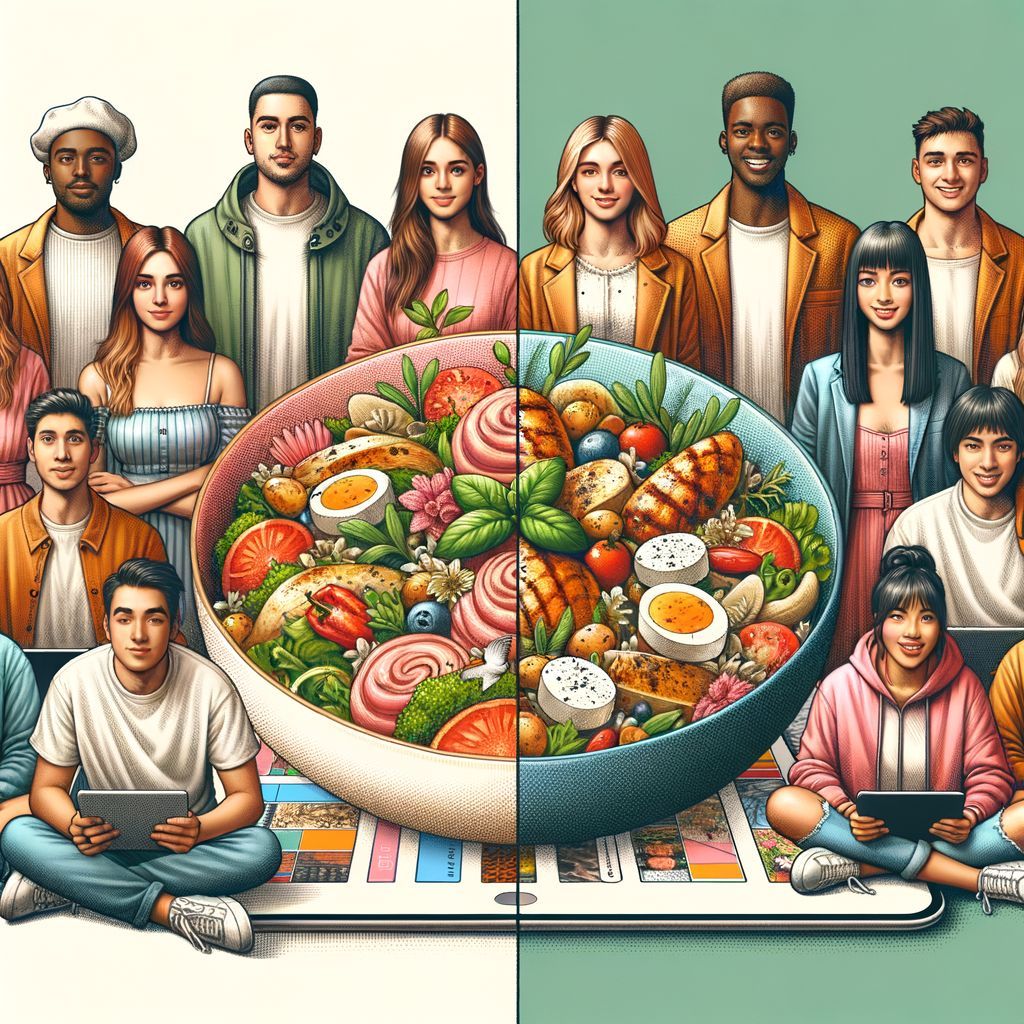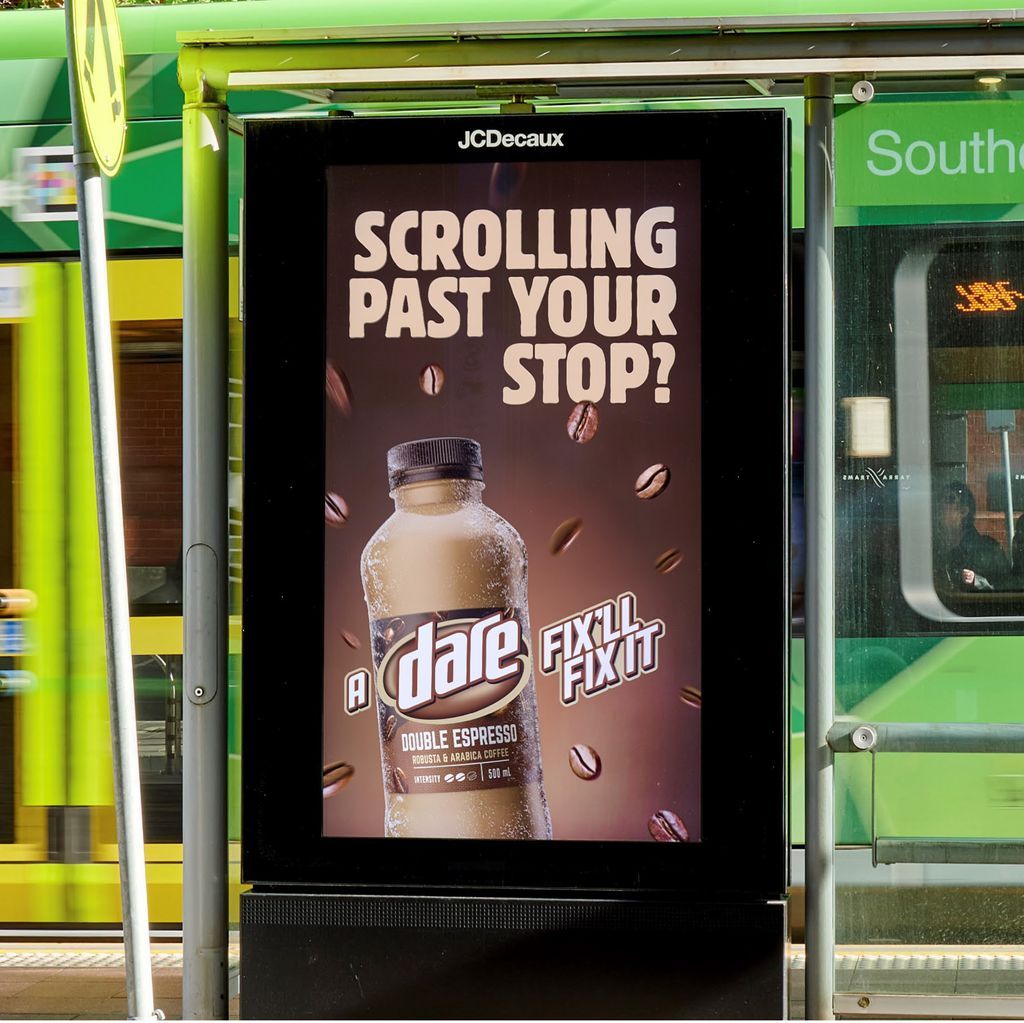

Editors' Note: Many Fast News images are stylised illustrations generated by Dall-E. Photorealism is not intended. View as early and evolving AI art!

Truth telling takes lead,
Storytelling steps aside,
Trust is what we need.

8 trends for 2024: Truth telling to outshine storytelling; rise of 'minfluencers', more angry customers and corporate purpose 'buddies' on rise: Havas Red
Havas Red predicts that truth telling will surpass storytelling as a key differentiator for brands in 2024 as part of eight core trends in its "Red Sky Predictions" forecast series.
The big themes beyond the evolution of brand storytelling include the competitive advantage in curiosity, the perils of personalisation, the fate of corporate purpose, the collective customer anger of the 2020s, the belated prioritisation of women’s health, the debut of the 'minfluencer', and the impact of generative AI on social media.
1. Truth telling v story telling
Recent global events such as Russia's invasion of Ukraine and the Israel/Hamas war have seen disinformation used as a weapon, raising concerns about the potential use of deepfakes in the upcoming elections in 40 countries. In response, schools have begun teaching media literacy classes to help students identify fake news.
HAVAS' annual Meaningful Brands™ study found that while 77% of consumers believe companies and brands should be transparent about their commitments and promises, only 33% believe they are. This gap underscores the need for a shift in PR and communications from storytelling to truth telling.
Red Sky states, "Brands that meaningfully connect with consumers will find that truth telling is now more of a differentiator than storytelling." They further emphasise, "The role of PR and communications will no longer be about simply storytelling but truth telling, told well (and that’s the important part)." This shift could mark a significant change in the marketing and PR landscape in the coming years.
2. Curiosity as a competitive advantage
Writer Tim Denning recommends taking a 'curiosity day' instead of a day off to rest, stating that "Following your curiosity is the most powerful drug in the world". Neuroplasticity research suggests it's possible to train oneself to become more curious, one method being through meditation.
Brands that harness their customers' curiosity by dispensing knowledge and inspiring wonder are predicted to make themselves indispensable. Brands that inspire curiosity demonstrate trust and respect for their consumers. Cultivating curiosity is crucial for companies aiming to achieve a truly inclusive culture.
In 2024, curiosity is predicted to emerge as an enabler of well-being, with many brands and employers already focusing on this due to the persistence of anxiety disorders and the prioritisation of physical and emotional wellness worldwide. Since curiosity is a skill that can be learned, it may be the next wave of mental health and well-being initiatives at school, work, and in personal relationships.
3. Generative IRL
Generative AI gained significant traction among communication professionals, according to an analysis by Hootsuite. The study, which analysed over 15,500 news articles and blogs, reported a 550% increase in topics related to AI learning from 2022 to 2023. Hootsuite predicts a significant rise in AI usage among social media managers in the next 12 months to alleviate staff workload. Tasks such as revising text, creating ad text from scratch, and developing new ideas are being delegated to AI.
By 2024, generative AI is expected to be integrated into social media strategies and real-life brand experiences. Brands are already utilising generative AI for out-of-home advertising, creating viral brand stunts and experiences on social media. Notable examples include JD Sports and L’Oréal. Furthermore, generative AI is anticipated to provide customer service assistance on social media platforms, marking a new era in digital marketing and customer engagement.
4. The corporate purpose buddy system
2024 is anticipated to be a significant year for corporate purpose, with businesses expected to advocate for causes in groups to create more impact and protect their brands. Corporate purpose was once seen as a safe and effective way for brands to connect with consumers, employees, and other stakeholders. However, during the pandemic, it became a powerful connector, leading to a surge of companies discussing their purpose.
Several companies, including Disney, Target, and Bud Light's brewer, have faced backlash due to controversial or divisive campaigns. Starbucks' stock dropped 8.96%, equating to a nearly $11 billion loss, after a workers union expressed solidarity with Palestinians. Qantas, Australia's national airline, has been accused of 'virtue signalling' after backing the Voice to Parliament, which would recognise Indigenous people in Australia's constitution, while facing criticism for allegedly illegal worker dismissals and selling tickets for cancelled flights.
In 2024, brands are expected to find the right cause and the right partners to join forces with, to be most impactful with their purpose and to protect themselves from backlash. Brands are expected to change how they engage publicly by advocating for causes with groups such as Business Roundtable and Chief Executives for Corporate Purpose (CECP). Niche groups like Public Square are finding power in numbers; on the 'anti-woke' marketplace, companies can join with others that are pro-life, pro-family, and pro-freedom to take an implicit stand with like-minded businesses.
Corporations are expected to rely more on public-private partnerships with trade groups and nonprofits to tackle important issues. Brands that want to demonstrate their commitment to their purpose and impact on important issues will likely outsource some of that expertise and power to corporate purpose partners.
5. The angry, raging '20s
The term 'Pangry', a portmanteau of 'panic' and 'angry', has been coined to describe the heightened state of public outrage experienced throughout the 2020s, a decade marked by anger at broken systems. The National Customer Rage Survey from 2023 showed that 43% of surveyed Americans raised their voice to a customer service representative to express dissatisfaction with their most serious business problems, up from 35% in 2017.
This outrage has been demonstrated through various events such as the murder of George Floyd in May 2020, the insurrection at the U.S. Capitol in January 2021, the 'woke' boycotts that impacted brands ranging from Target to Anheuser-Busch to Doc Martens to Costa Coffee in 2023, and the present-day fury about the Israel-Hamas war.
In 2024, 40 countries will be voting, which could further exacerbate geopolitical friction. Jennifer Welch, Bloomberg Economics’ chief geo-economics analyst, predicts that the world faces perhaps its most tumultuous year in a generation from a geopolitical standpoint.
Research from Kantar shows that digital ads that elicit strong emotions are four times more likely to generate impact than those with weaker emotional connections. They are also 2.6 times more likely to go viral and four times more powerful in driving long-term brand equity.
Brands that have successfully harnessed anger include Nike, with its 'Believe in Something' campaign featuring NFL player Colin Kaepernick, which led to a 31% increase in online sales. Dove’s 'Real Beauty' campaign tapped into the anger many women feel about unrealistic beauty standards. Brands that acknowledge customers’ anger, by sincerely apologising and responding compassionately to negative comments, can transform that emotional intensity into loyalty.
6. Women's wellbeing moves to forefront
Women's well-being in the workplace is increasingly becoming a priority for companies. Despite making up a significant portion of the workforce, women have historically faced underrepresentation in leadership roles and a persistent gender pay gap. This gap is even wider for women with children, with women earning 77 cents for every dollar men earn for work of equal value. Major life events such as pregnancy, motherhood, menopause, and caring for aging parents can lower women's potential earning power.
In 2023, due to talent shortages and the recognition of women over 50 as a large untapped talent source, many countries are refocusing on retaining and attracting more women. This shift has led to a reevaluation of benefits and a broader focus on factors affecting women's well-being, such as menstruation and menopause, which can impact their productivity and engagement. The British government has appointed a 'menopause employment champion' to improve workplace support. Spain has become the first European country to recognise the right to menstrual leave.
In 2024, employers are expected to rethink ways to support women's well-being and flexibility in their policies, benefits, and workplace culture. This could include offering menstrual leave, covering abortion travel costs, providing on-site daycare, and adding menopause-specific care to their benefits. The question arises whether every company in 2024 should consider themselves a women's health company. Companies that treat their women workers well are more likely to attract women consumers, who drive the majority of consumer spending.
7.Rise of 'minbifluencers'
The next wave of influencers, or 'minfluencers', is predicted to come primarily from Generation Alpha (those born between 2010 and 2025). Known as the 'iGeneration', these young individuals have grown up with technology and social media from a tender age. Some of these minfluencers, such as 12-year-old Ryan Kaji, one of the highest-paid YouTube stars with 36 million subscribers and an estimated worth of $66 to $95 million, have parents with no particular social influence.
Other minfluencers are the offspring of celebrities, like North West and Penelope Disick, who share their skincare routines on TikTok, or Bryn Hoppy, who mimics her mother Bethany Frankel's social presence to boost her own brand. Many children have accounts run by their parents, such as Elle Lively McBroom with 4.1 million Instagram followers, or twins Taytum and Oakley, who have more Instagram followers than their celebrity parents.
Brands can leverage minfluencers with certain content types, such as tutorials and challenges, and on certain platforms. A reported 51% of Alphas first hear about brands through YouTube, compared to 47% of Gen Z viewers who learn about brands on Instagram and TikTok.
However, brands looking to work with minfluencers need to be aware of the Children’s Online Privacy Protection Rule (COPPA), child labor laws, and responsible marketing practices, and should be comfortable working closely with parents.
8. Redefining personalisation
Personalisation will evolve into a journey that brands undertake with consumers, rather than a mere endpoint. The growing demand for personalised experiences at every touchpoint is prompting brands and businesses to rethink their approach, moving away from a one-size-fits-all strategy to creating personalised journeys based on the consumer's relationship with the brand. An analyst at Forrester likens personalisation to dating, stating, "Personalization is a lot like dating: Consumers don’t want to share everything from the get-go. Rather, they are more receptive to personalization in the post-purchase stages."
According to research, 38% of consumers enjoy personalised experiences when initially discovering or researching a product/service, 43% during the buying and usage stage, and 47% post-purchase. The latest round of the HAVAS Meaningful Brands research indicates that we have entered the era of the 'Me-conomy', where the focus is on individual consumer needs and well-being. Brands are expected to reevaluate their approach to personalisation to make it less problematic.
While social media algorithms were designed to connect us with like-minded individuals and serve content reflecting our interests and beliefs, they have inadvertently encapsulated some of us in a filter or bubble, contributing to a shrinking worldview, greater polarisation, and the spread of extremism. This growing awareness of the need to protect personal information from fraud or misappropriation is leading some consumers to opt out of personalisation. Brands that succeed at personalisation in 2024 will do so by mapping personalisation to their customers’ entire journey, paying particular attention to them after purchase.
Partner Content from Salesforce
A Guide to Personalised Marketing That Keeps Customers Engaged
Customer Service Makes a Strategic Shift for ANZ Organisations










